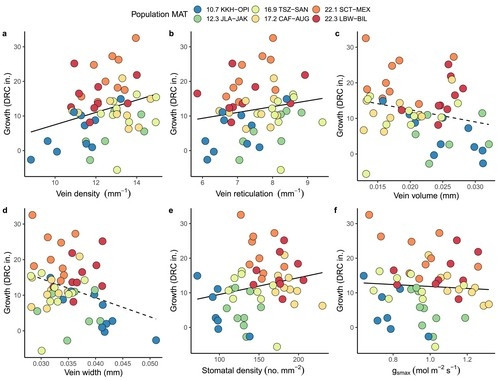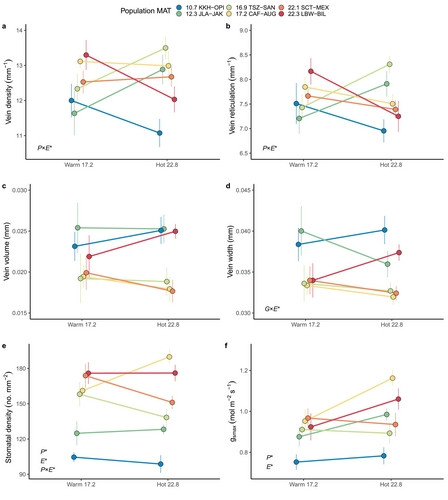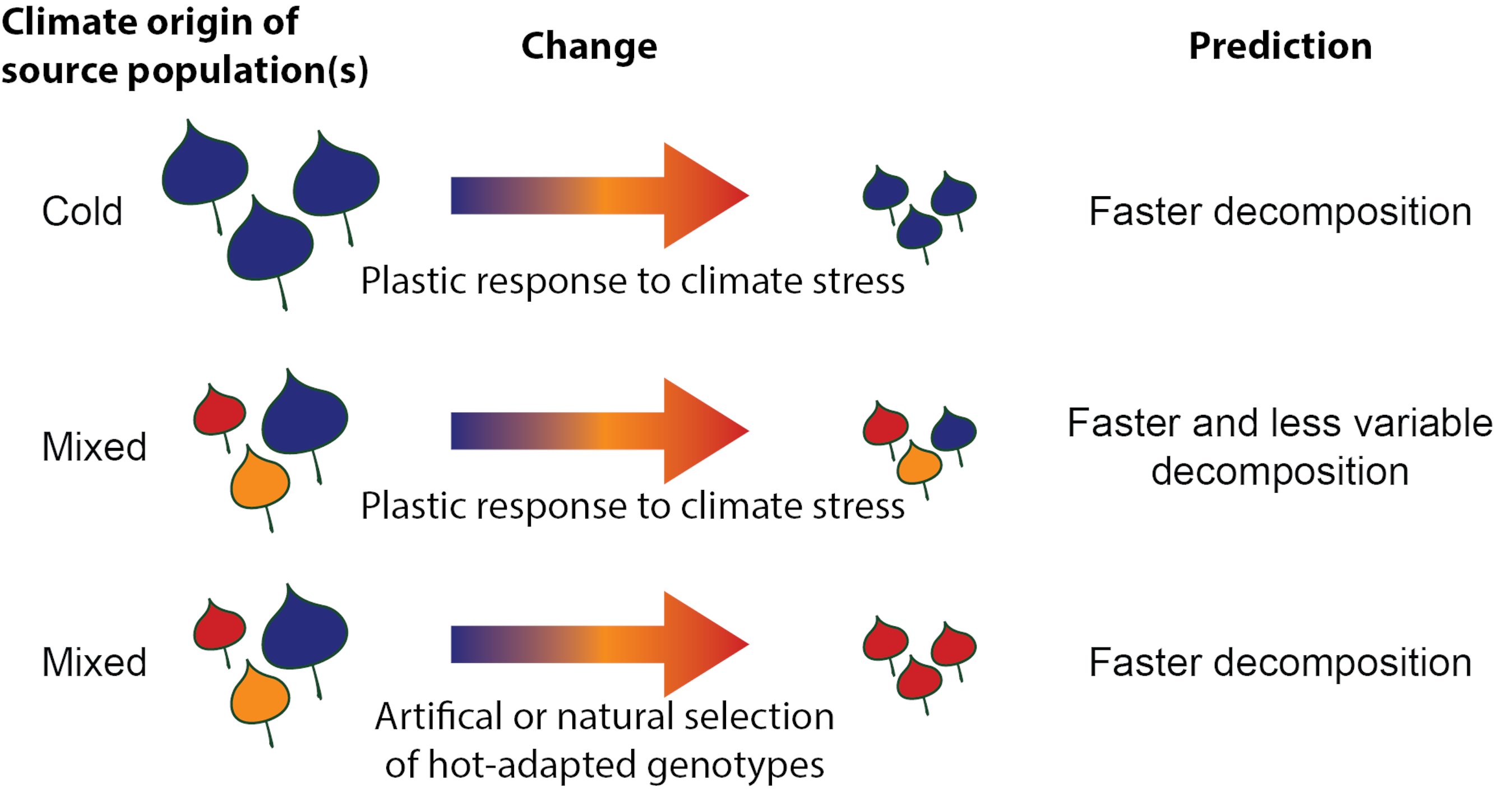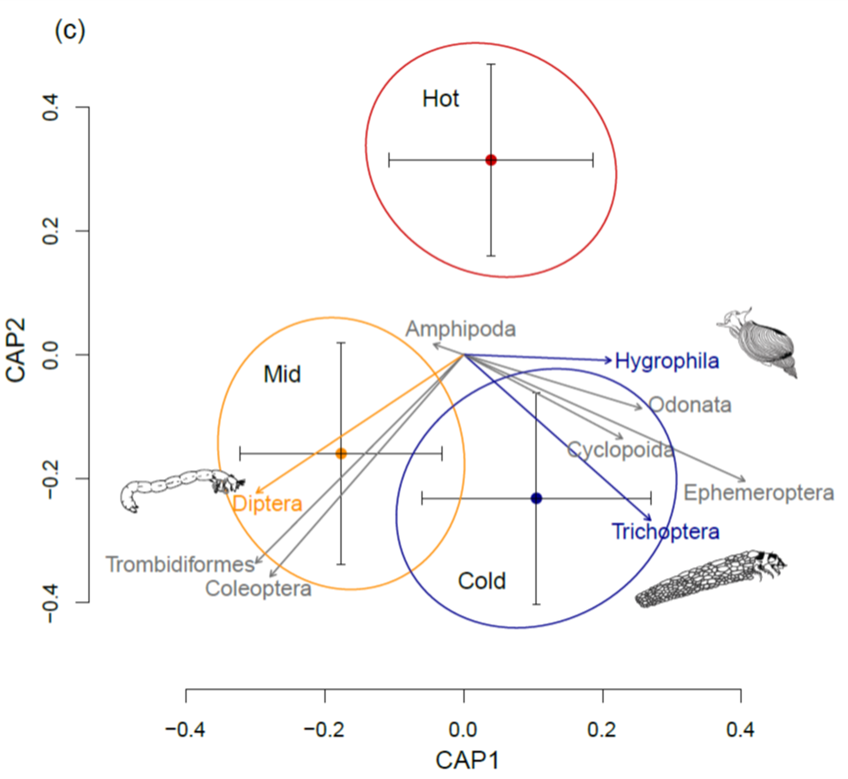



Dr. Jackie Corbin, who now works on actually applying restoration principles with NRCS, used hyperspectral reflectance of Fremont cottonwood leaves growing in multiple common gardens and at home to detect genetic, environmental, and gxe effects on spectral traits https://doi.org/10.1111/pce.15263. She showed we can detect a tree’s population of origin with high accuracy, even in a controlled environment, and also that common spectral indicators of photosynthetic capacity decline as trees are planted in hotter temperatures than they have evolved to deal with. Read all about it, open access in Plant, Cell, and Environment.
With co-advisor Clare Aslan (NAU SES) and co-author Todd Chaudhry (National Park Service), Sarah found that forest management approaches across multiple agencies shapes ecological responses to major wildfires.
Sterner, S.A.**, C.E. Aslan, R.J. Best, and T. Chaudhry. 2022. Forest management effects on vegetation regeneration after a high severity wildfire: A case study in the southern Cascade range. Forest Ecology and Management 520: 120394. link
Using the Reading Fire as a case study crossing Lassen National Park and Lassen National Forest boundaries, Sarah showed that both management before a fire, such as fire suppression or harvesting, and management after a fire, such as restoration and replanting, shaped the composition and density of forest vegetation. Sarah combined both field surveys and remote sensing to assemble both short and long-term perspectives on fire and forest management, which is increasingly important to understand across the warming American West. You can read her paper here!
Congrats to former Lindroth Lab postdoc Mike Eisenring (now a Researcher at the Swiss Federal Institute for Forest, Snow and Landscape Research) on this great new paper about intraspecific variation in phenotypic plasticity! Mike found that cottonwood trees from cooler climates show higher plasticity in defensive chemistry in response to both climate and herbivory, until you stress them out with a combination of both. Great collaboration between UW Madison and cottonwood ecologists at the NAU Center for Adaptable Western Landscapes, supported by our Bridging Ecology and Evolution NSF grant!
Eisenring, M., R.J. Best, M.R. Zierden, H.F. Cooper, M.A. Norstrem, T.G. Whitham, K. Grady, G.J. Allan, and R.L. Lindroth. 2022. Genetic divergence along a climate gradient shapes chemical plasticity of a foundation tree species to both changing climate and herbivore damage. Global Change Biology. open access link
J.R. Jeplawy, H.F. Cooper, J. Marks, R.L. Lindroth, M.I. Andrews, Z.G. Compson, C. Gehring, K.R. Hultine, K. Grady, T.G. Whitham, G.J. Allan, and R.J. Best. 2021. Plastic responses to hot temperatures homogenize riparian leaf litter, speed decomposition, and reduce detritivores. Ecology 102:e03461. link
Riparian ecosystems are shaped by leaf litter traits that depend on both local adaptation and plasticity across a climate gradient. MS student Joann Jeplawy used 6 populations and 3 common gardens of Fremont cottonwood across Arizona.
She found that trees growing in hot conditions made small and fast-decomposing leaves, whereas cold conditions allowed trees from different origins to express a wide range of traits and decomposition rates.


So great to see this paper out from Jaime Anaya-Rojas and our collaborators at eawag and the Eizaguirre Lab. A predator’s phenotype affects its trophic impact, but what affects the predator’s phenotype? Gross worms in their eyeballs! Read the paper in Ecology here. Congrats Jaime!


Thrilled to see Moritz Lürig‘s fantastic dissertation work out in the Journal of Animal Ecology (preprint here)! Supported by the ETH center for Adaptation to a Changing Environment and working in the Matthews lab at Eawag (Switzerland), Moritz looked at both diet and stickleback predation as drivers of camouflage on short and long timescales. More work on the fish side of this equation coming in the future!
A paper about sticklebacks! Years after leaving stickle-rich British Columbia, and also a little while after first heading to Europe to study them there with Blake Matthews and Ole Seehausen. The paper (open access to read) is out in Nature Ecology & Evolution today, along with a behind-the-scenes blog post.
Eco-evolutionary mesocosms:
Eco-evolutionary marzipan:

 Stoichiometric traits of stickleback: Effects of genetic background, rearing environment, and ontogeny – individual stoichiometry has diverged in genetically distinct lineages, but is also strongly determined by rearing environment (via body condition). With colleagues at Eawag and the University of Victoria, open access @ Ecology and Evolution.
Stoichiometric traits of stickleback: Effects of genetic background, rearing environment, and ontogeny – individual stoichiometry has diverged in genetically distinct lineages, but is also strongly determined by rearing environment (via body condition). With colleagues at Eawag and the University of Victoria, open access @ Ecology and Evolution.
Evolution in a Community Context: On Integrating Ecological Interactions and Macroevolution – after many a great conversation with these fantastic co-authors, happy to see this out! It’s always interesting to see how many similar and different ways ecologists and evolutionary biologists can think about the same processes!
You must be logged in to post a comment.